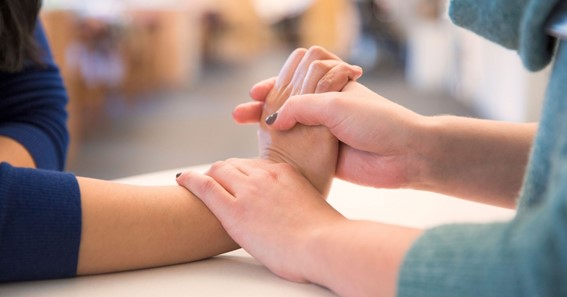Rehabilitation is an important aspect of healthcare designed to help individuals who have been injured or experienced illness recover and restore their health.
Rehabilitation therapy, including physical therapy and hand therapy, are two important branches of medical care that help people regain mobility and function, reduce pain, accelerate healing, and improve the overall quality of life.
Hand Therapy: Focused on the Hand and Upper Extremity
Hand therapy is a specialized rehabilitation therapy branch that focuses on treating conditions affecting the hands and upper extremities (arms).
Hand therapists are occupational or physical therapists who are specially trained in assessing, diagnosing, managing, and preventing injuries or conditions affecting the hands, such as carpal tunnel syndrome, trigger finger, tennis elbow, or wrist fractures.
Conditions Treated by Hand Therapy
Hand therapy is used to treat a wide range of conditions involving the hand and upper extremities. These may include:
- Carpal tunnel syndrome
- Trigger finger
- Tennis elbow
- Golfer’s elbow
- Wrist sprains
- De Quervain’s tenosynovitis
- Frozen shoulder
- Rotator cuff injuries
- Shoulder impingement
In addition, there are many other conditions that can be treated by hand therapy. You can contact FYZICAL Therapy & Balance Center in Berkeley Heights for more details.
Hand Therapy Techniques and Interventions
Hand Rehab Services in Berkeley Heights involves the use of various techniques to aid patients in regaining function and reducing pain in their hands and upper extremities.
These approaches may include splinting, exercises, manual techniques involving soft tissue mobilization, and cryotherapy. Additionally, hand therapists may include fine motor activities to improve hand dexterity during treatment.
The ultimate objective is to increase grip strength while ensuring that the fingers, thumb, wrist, and forearm have a wide range of motion.
Physical Therapy: A Holistic Approach to Rehabilitation
Physical therapy is another type of rehabilitation therapy that takes a holistic approach that focuses beyond treating just one part of the body as a whole.
Physical therapists specialize in helping people recuperate from injury or illness by developing personalized treatment plans that improve movement, strength, mobility, and function throughout the body.
Conditions Treated by Physical Therapy
As a form of rehabilitation therapy, Physical Therapy has the ability to treat various types of health conditions affecting the musculoskeletal system.
This includes orthopedic injuries such as fractures or sprains, neurological disorders like cerebral palsy or multiple sclerosis, cardiovascular symptoms, and general mobility limitations such as back pain, osteoarthritis, and those affecting one’s recovery from a stroke.
In essence, Physical Therapy addresses a broad range of physical issues through targeted treatment plans customized for each individual patient.
Physical Therapy Techniques and Interventions
Physical therapy involves various techniques and interventions designed to assist patients in achieving their functional goals.
These include manual techniques like joint mobilization, soft tissue mobilization, stretching exercises, resistance training, and balance and coordination training. Modalities such as ultrasound, electrical stimulation or hot/cold therapy are also used to aid in recovery.
The primary objective of Physical Therapy in Berkeley Heights is to restore optimal movement and function in the body through a personalized treatment plan. The implementation of these techniques depends on the specific needs of each patient to treat the underlying condition or injury.
By utilizing a range of physical therapy techniques and interventions, physicians can help patients regain control over their bodies and improve their overall quality of life.
The Key Differences between Hand Therapy and Physical Therapy
Although hand therapy and physical therapy share some similarities, there are key differences between the two approaches.
Area of Focus
Hand therapy is a specialized form of rehabilitation therapy that focuses solely on treating injuries and conditions related to the hand and upper extremities.
On the other hand, physical therapy is a more comprehensive approach that aims to resolve issues affecting the entire body, including those that may affect the hand but are not limited to it.
This includes restoring overall movement and functioning in multiple areas, such as the back, neck, or even lower limbs, along with pain management, injury prevention, and education throughout the recovery process.
Treatment Approaches
Both hand therapy and physical therapy incorporate manual techniques, exercises, and modalities to facilitate an individual’s recovery specific to their area of concern.
However, the treatment approach may vary between patients undergoing physical rehabilitation versus those undergoing hand rehabilitation alone, as physical rehabilitation takes a more comprehensive approach to address overall body mobility compared to the focused treatment of hands-in-hand therapy.
Click here – BB Gun Maintenance 101: How to Keep Your Airgun in Top Condition
Conclusion
Both hand therapy and physical therapy are designed to promote healing and rehabilitation, but they serve different purposes depending on the specific needs of the patient.
Hand therapy is focused solely on treating issues related to the hands and upper extremities, while physical therapy takes a more holistic approach addressing overall body mobility.
It’s important for patients to understand these differences in order to determine which program would be most effective for their unique situation.
Consultation with FYZICAL Therapy & Balance Center in Berkeley Heights is essential as it allows for a personalized treatment plan tailored to individual needs, ensuring successful outcomes regardless of the type of rehabilitation required.

